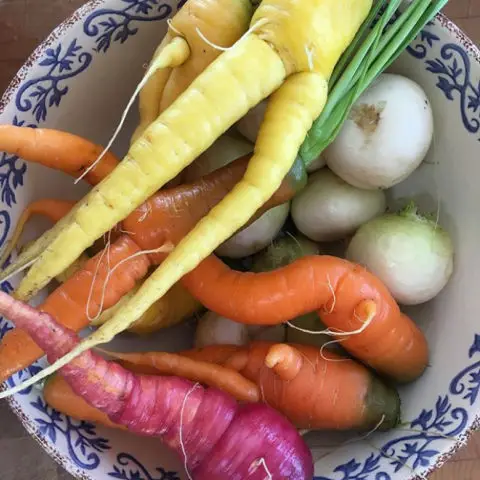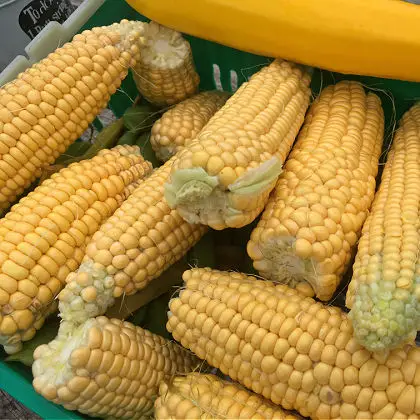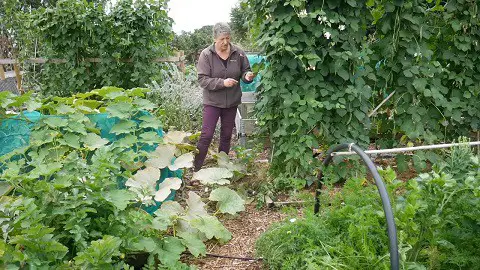Making full use of vegetables
Ways to make full use of vegetables. Over the last few years I have come to realise how wasteful I have been with the precious resources in our garden. In our attempt to become more self-reliant and resilient I have been trying some different ways to make the most of space that we have by using more of each crop that we grow.
Most vegetables – use peelings, off-cuts and rejected leaves, roots etc. to make vegetable stock. Ensure the vegetables are washed and free of soil prior to peeling if using to make stock. This can be frozen to provide extra flavour for meals at a later date.
Brassicas
Brussels Sprouts – the tops can be eaten, they have a mild sprouty-cabbage flavour.
Kale – flowers can be eaten like a sprouting broccoli.
Sprouting Broccoli – leaves can be eaten (I prefer the small younger leaves).
Cabbage and hearting Lettuce – when you cut the cabbage or lettuce, leave the stem in the ground. It will usually regrow with several smaller ones, we eat these when they are small.
Root and Stem Vegetables

Beets – young leaves are great in salads. Older leaves work as an alternative to spinach or kale and of course the beetroot is delicious too.
Turnips – turnip tops can be eaten.
Carrots – the leaves can be eaten in salads (although I find them bitter), they can be cooked or added to stir fries.
Swedes or Rutabaga – the leaves can be eaten like spring greens.
Celery – both the stems and the leaves can be eaten. I chop and freeze the young leaves to add to dishes during winter.
Alliums
Onions – cut some of the green leaves, chop into small pieces and freeze or dehydrate.
Leeks – chop the green leaves and freeze or dehydrate.
Garlic – leave some bulbs in the ground for using the green leaves and young bulbs next year.
Legumes
Beans – French beans and runner beans can be eaten as young pods or you can leave them on the plants to mature and collect the beans in the pods.

Sweetcorn – once you have blanched and cut off the kernels for use, return the cob to the pan of boiling water. Cook for around half an hour, drain – save the liquid and once cooled, freeze the liquid. It’s great for making sauces or as a soup base.
Herbs
Herb Fennel, Dill, Caraway etc. Save the seeds for adding to dishes.
Herbs – chop and dehydrate or freeze. Using an ice cube tray fill with chopped herbs and add a small amount of water and freeze or chop finely and freeze in bags.
PLEASE NOTE – Among other things, parsnip and rhubarb leaves are poisonous, do not eat them! If in doubt about whether your veg is edible, please do some research, it’s better to be cautious than ill.
So whether you are growing your own vegetables, buying in a store or getting a veg box, there are many ways to make your food go further and to have less food waste at home.
This blog post shows you some ways to make full use of vegetables creating less waste. If you have more suggestions, please leave them in the comments on this post.

Further reading
Winter vegetable coleslaw ideas from Sow, Grow and Cook.
I find masses of useful articles and information about storing and using food at Permaculture Magazine.
- Bulbs for summer and autumn - July 4, 2025
- Showstopper flowers in early summer - June 20, 2025
- Best flowering variegated plants - June 13, 2025

A few good quality onion skins can be added to stock vegetables, they will add a beautiful golden colour to your soup stock liquid.
This year we have a HUGE number of early fallers from one of our apple trees…. too small to eat and anyway we will have large harvest and many of the fallers have some bruising or rot. They won’t store even long enough for the village apple pressing. So I am using them to make apple cider vinegar. I’ve found a recipe repeated in lots of places that simply involves cutiing the apples up roughly. Cores and skins included (just cut out any bruising, rot and livestock(!). Fill a container about two thirds full and then fill to the top with water… cover and leave for 3 – 4 months….Can’t wait to see if it works.
Kale is great dehydrated. I powder it, and use it in cooking with other seasonings. I dehydrate onions and green peppers for cooking in winter.
I also keep leftover veg from a meal, put it in a bag in the freezer. Once I have a good size batch, I make a minestrone soup, or a stew.
Broad bean tops (and pea shoots) – delicious as a vegetable in their own right. Lightly steamed or sautéed in a little butter or oil. 👌
Green tomatoes you have to pick to avoid them being unusable from frost damaged, can be sliced and dehydrated, then powdered to make a citrus like flavoured seasoning. It’s quite good. Nice on avocado toast. It adds a bit of an acidic hit to soups etc. There’s only so many fried green tomatoes and pickled tomatoes one can take on. Dehydrated powdered green tomatoes take up very little space in the pantry. You do have to get in the jar with a fork every so often to break it up as it does clump.
You can save onion peels and use them at Easter to colour the Easter eggs. These egg shells can be later put in the compost bin as they don’t have any chemicals in them.
You can dehydrate celery leaves then grind to a powder in a coffee grinder. Makes a really good seasoning.
I usually don’t peel a lot of root vegetables from the garden. Just wash the dirt and chop everything. Tops and tips go in the freezer, the barn animals or compost, depending of the quality.
I keep a bag in the freezer that I add vegetable peelings to and when I have enough put them in my slow cooker covered in hot water. I add peppercorns and bay leaves and strain when cooked. Then freeze the liquid for stock. I tend to make it concentrated then add water when I use it to save freezer space.
I’m currently learning about Lacto fermentation and different ways to preserve the things I grow. It’s a fascinating topic and means I will waste far less in the years to come
I also love using beet root tops. They are lovely cooked in a skillet with a little onion .